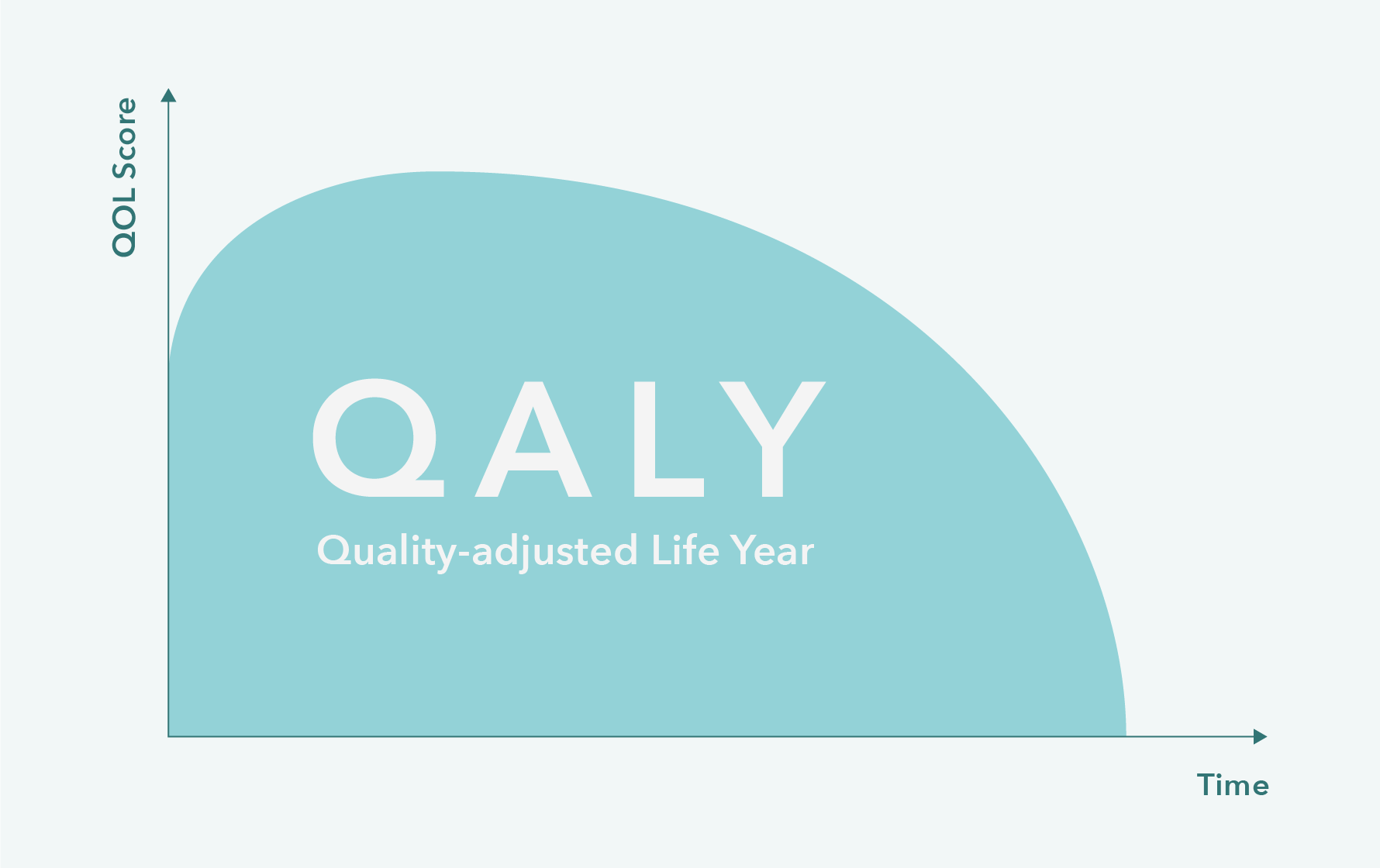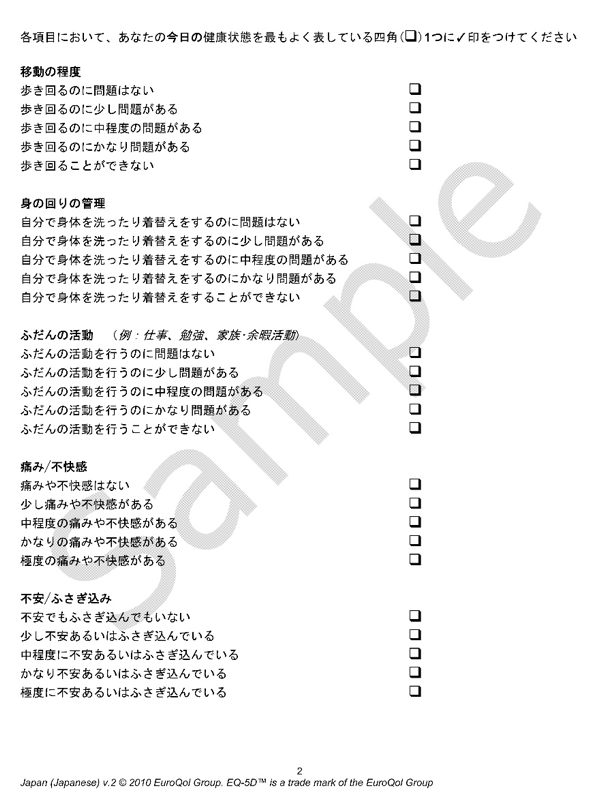1. Outcome of treatment calculated as QALY
In the cost-effectiveness analysis, how to evaluate the cost for “outcome” is an important question.
In the case of flu, for example, the number of days taken for the recovery will be concerned. “Recurrence rate” is an important indicator for cancer treatment. “Reduction of the blood glucose level (or HbA1c)” should be a short-term goal of diabetic treatment.
However, if cost-effectiveness is calculated using different outcome depending on the illness, such as flu, cancer or diabetes, the results will be difficult to interpret. When treatment requiring JPY 1 million for early recovery by one day from flu is compared with the treatment requiring JPY 1 million for reduction of the blood glucose level by one unit, the degree of cost effectiveness is not clear, even if the ICER is the same for both treatments.
For this reason, QALY is usually used as a common outcome for various diseases.
2. Method of calculation of QALY
QALY is calculated by multiplying the QOL (quality of life) by the years of survival (Fig. 1). QOL score ranges from 0 (death) to 1 (full health). For example, an individual surviving for 2 years with a QOL score of 0.4 gains 0.4 x 2 = 0.8 QALY.
If an individual has survived for 1 year under the condition of QOL 1, the individual gains 1 x 1 = 1 QALY. Therefore, 1 QALY is regarded as the unit of health indicating “1-year survival under full health” Thus, 0.8 QALY mentioned above has equal value to “0.8-year survival under full health”.
The concept of QALY may be closer to an intuitive feeling rather than a simple “survival time” for evaluation. Many people probably consider it more desirable to survive one year under a healthy condition, than in a bedridden state. Although the survival time is the same, the QOL is better in the former, gaining a higher QALY. The difference can be reflected to analysis.
That is, one advantage of QALY is that it simultaneously reflects the quality of the survival time.

3. How is QOL evaluated?
The QOL score is investigated on the basis the patients’ responses to a QOL questionnaire (Fig. 2). The EQ-5D (EuroQOL 5 dimension), composed of 5 domains at 5-levels alternatives, has been the most frequently used for cost-effectiveness analysis. EQ-5D score is calculated from the patient’s responses to the 5 items.
An important feature of QOL measurement is that the patient is asked to report on his/her QOL by him/herself. It has been reported that if the QOL is evaluated by a healthcare professional, the result is not always consistent with the patient’s own QOL.
This perspective of QOL is important also for the purpose of reflecting the patient’s self-report of his/her health status into the cost-effectiveness evaluation.
